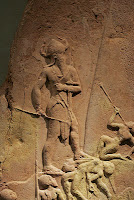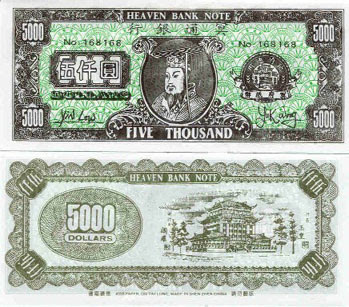Ashkelon.
I thought I'd got this whole thing worked out. I even thought that I was just about ready to give the bible a read (as it the easiest to find Bronze Age text)
Then I realized that I hadn't a clue about who the Philistines were.
OK, well for me history starts with the Sumerians "The black-headed people", their culture became via a close cultural symbiosis with their neighbours, Akkadian.
(2800 BC is the oldest, Akkadian text).
At the beginning of the second millennium BC, West Semitic people created kingdoms including and around the city of Mari. They 'take over' but still use Akkadian for writing. They compose the Enûma Eliš, they have the king Hammurabi -and plenty more!
The Akkadian word for them is Amurru, via the Old Testament we call them Amorites.
At the same time, related tribes invaded what is now Palestine.
Amorites who stayed up in the hills stayed as 'Amorites' whilst those who lived closer to the sea were called Canaanites from Akkadian Kinahhu (meaning: purple dye).
The North coast Canaanites were called Phoenicians by the Greeks and their cities were Tyre, Sidon and Byblos.
They had many colonies, including Cyprus.

All of these are Ugarit culture...I think.
The Romans called the Phoenicians at Carthage Poeni.
So any thing Ugarit found in Italy, Sicily or North Africa, gets labelled, Punic.
From the east of the Canaanites (or Phoenicians, or Kinahhu which ever name you fancy) territory there is another set of tribes known as Aramaeans, probably semi-nomadic pastoralists from northern Syria and northern Mesopotamia and around for a long time before 1200 BC. Naram-Sin of Akkad mentioned Aram as a place name, and a people or place of Aram was mentioned by in texts found in Mari written 1900 BC, and Ugarit in about 1300 BC.
From 1000 BC, Damascus was their central city and their language became the language of the Jews, of government and, for want of a better word, eclipsed Akkadian.
The Aramaic religion was considered to be 'heavily Hellenised' how or why, is another question.
But who are the Philistines?
The word may mean- migrant or invader...The Bible describes them as Israel's enemy.
I'm not going to get an answer.
The Philistines had five cities. Gaza, Askelon, Ashdod, Ekron and Gath, from the Wadi Gaza in the south to the Yarqon River in the north. Ashkelon was called Hieropolis or Bambyce.
Ashkelon was once:
.
Herodotus describes a temple at Ashkelon as the oldest temple to Aphrodite (Atargatis) in the world.
Another such temple as described by Herodotus 'is to be found in Cyprus'.
The god Hadad (Akkadian Adad) all fury, thunder and wind was Atargatis's consort.
Lucian (whose book I've yet to find) and who died in AD 180 described the temple of Atargatis. Fortunately, other people have copied and pasted so I can add to the copy and paste fest:
But it is quite clear that in the Bible the Queen of Heaven, is erased in an effort to create a new religion based on a distant sky-god, and, to achieve this everything possible is done to appear not-Canaanite, and not Philistine.
For instance The rite of seething a calf in its mother's milk becomes never mix meat with dairy.
Then I realized that I hadn't a clue about who the Philistines were.
OK, well for me history starts with the Sumerians "The black-headed people", their culture became via a close cultural symbiosis with their neighbours, Akkadian.
(2800 BC is the oldest, Akkadian text).
At the beginning of the second millennium BC, West Semitic people created kingdoms including and around the city of Mari. They 'take over' but still use Akkadian for writing. They compose the Enûma Eliš, they have the king Hammurabi -and plenty more!
The Akkadian word for them is Amurru, via the Old Testament we call them Amorites.
At the same time, related tribes invaded what is now Palestine.
Amorites who stayed up in the hills stayed as 'Amorites' whilst those who lived closer to the sea were called Canaanites from Akkadian Kinahhu (meaning: purple dye).
The North coast Canaanites were called Phoenicians by the Greeks and their cities were Tyre, Sidon and Byblos.
They had many colonies, including Cyprus.
All of these are Ugarit culture...I think.
The Romans called the Phoenicians at Carthage Poeni.
So any thing Ugarit found in Italy, Sicily or North Africa, gets labelled, Punic.
From the east of the Canaanites (or Phoenicians, or Kinahhu which ever name you fancy) territory there is another set of tribes known as Aramaeans, probably semi-nomadic pastoralists from northern Syria and northern Mesopotamia and around for a long time before 1200 BC. Naram-Sin of Akkad mentioned Aram as a place name, and a people or place of Aram was mentioned by in texts found in Mari written 1900 BC, and Ugarit in about 1300 BC.
From 1000 BC, Damascus was their central city and their language became the language of the Jews, of government and, for want of a better word, eclipsed Akkadian.
The Aramaic religion was considered to be 'heavily Hellenised' how or why, is another question.
But who are the Philistines?
The word may mean- migrant or invader...The Bible describes them as Israel's enemy.
I'm not going to get an answer.
The Philistines had five cities. Gaza, Askelon, Ashdod, Ekron and Gath, from the Wadi Gaza in the south to the Yarqon River in the north. Ashkelon was called Hieropolis or Bambyce.
Ashkelon was once:
...one of the five cities of the Philistines (Josh. 13:3; 1 Sam. 6:17). It stood on the shore of the Mediterranean, 12 miles north of Gaza. It is mentioned on an inscription at Karnak in Egypt as having been taken by king Rameses II., the oppressor of the Hebrews. In the time of the judges (Judg. 1:18) it fell into the possession of the tribe of Judah; but it was soon after retaken by the Philistines (2 Sam. 1:20), who were not finally dispossessed till the time of Alexander the Great. Samson went down to this place from Timnath, and slew thirty men and took their spoil. The prophets foretold its destruction (Jer. 25:20; 47:5, 7). It became a noted place in the Middle Ages, having been the scene of many a bloody battle between the Saracens and the Crusaders. It was beseiged and taken by Richard the Lion-hearted, and "within its walls and towers now standing he held his court." Among the Tell Amarna tablets are found letters or official despatches from Yadaya, "captain of horse and dust of the king's feet," to the "great king" of Egypt, dated from Ascalon. It is now called 'Askalan. [LINK]
.
Herodotus describes a temple at Ashkelon as the oldest temple to Aphrodite (Atargatis) in the world.
Another such temple as described by Herodotus 'is to be found in Cyprus'.
The god Hadad (Akkadian Adad) all fury, thunder and wind was Atargatis's consort.
Lucian (whose book I've yet to find) and who died in AD 180 described the temple of Atargatis. Fortunately, other people have copied and pasted so I can add to the copy and paste fest:
It was richly decorated, with a golden ceiling and doors, and inside it, the statue of Atargatis was also made of gold and displayed with Hadad's. While He was enthroned on two bulls, She sat on two lions (like Astarte), holding in one hand a scepter, in the other a distaff; around Her waist was a girdle that Lucian identifies with the cestus of Aphrodite, the magic belt that made Her irresistible when worn. Her crown was in the form of a tower (the mural crown, signifying possession or rule over a city) and rays were depicted behind Her head. This statue was covered with gems and jewels from all over, and in Her crown was a great red jewel that lit up the room. Lucian also says that no matter where you were in the room the statue's eyes always looked directly at you.So much of this is confusing; I haven't got the picture yet.
But it is quite clear that in the Bible the Queen of Heaven, is erased in an effort to create a new religion based on a distant sky-god, and, to achieve this everything possible is done to appear not-Canaanite, and not Philistine.
For instance The rite of seething a calf in its mother's milk becomes never mix meat with dairy.

